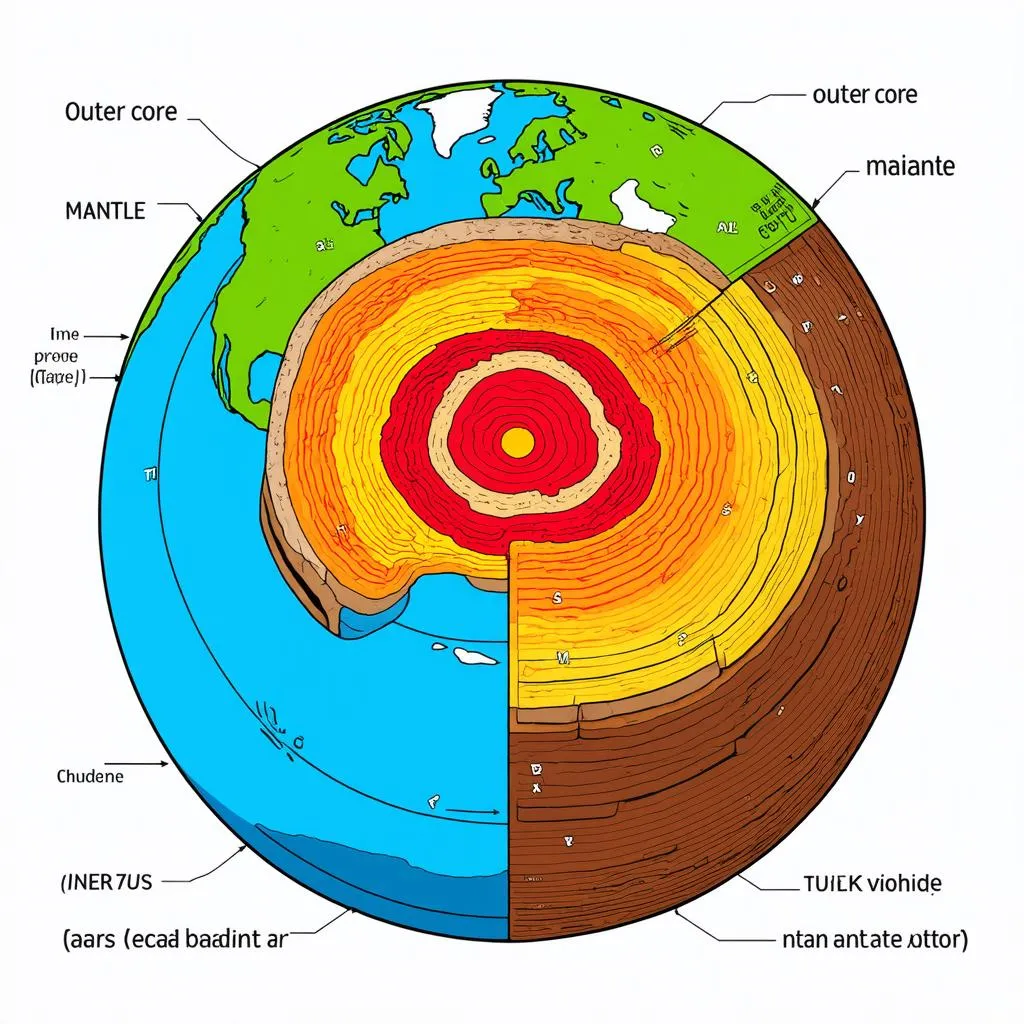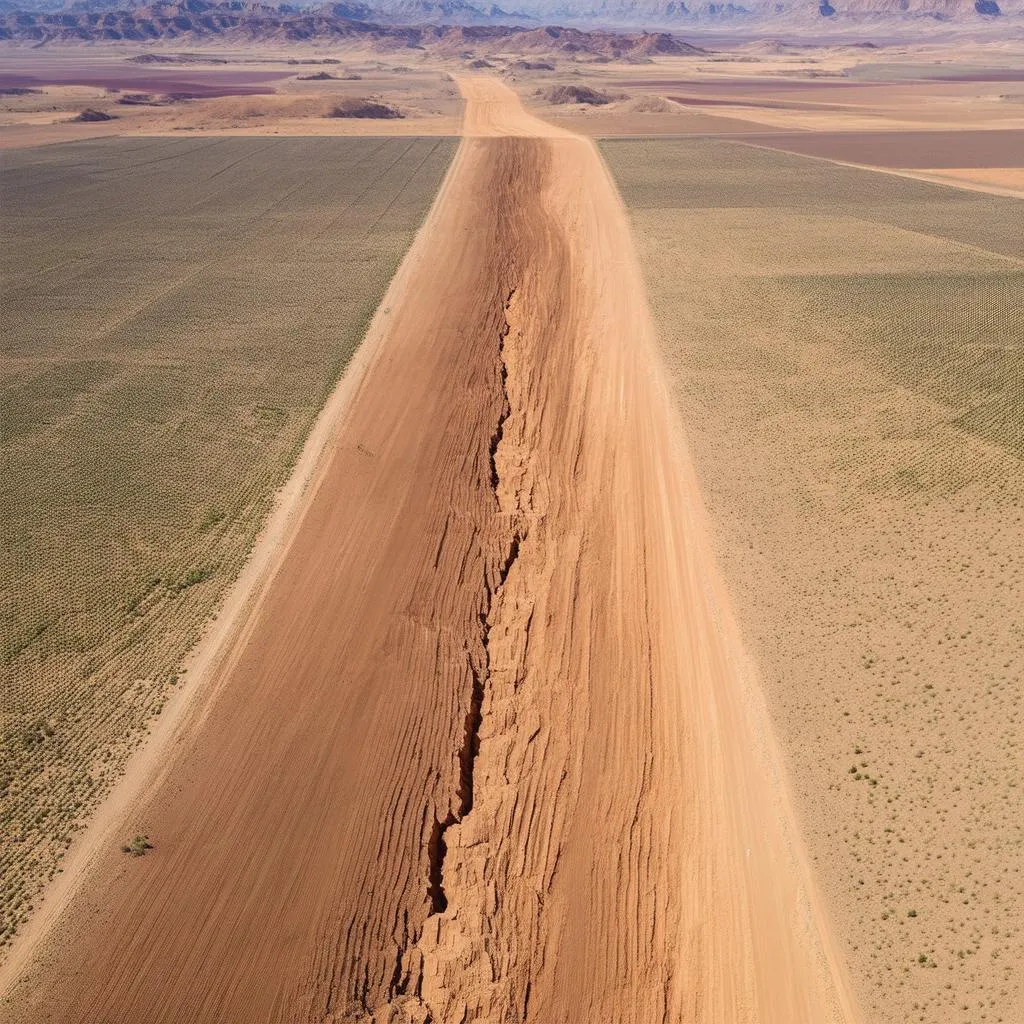Have you ever felt the ground shake beneath your feet? That, my friends, is the power of seismic waves, the invisible force unleashed by earthquakes. It’s a natural phenomenon that reminds us of the immense energy constantly coursing through our planet. But have you ever stopped to wonder, what medium do these seismic waves actually travel through to create such a tremor? Let’s delve into the fascinating world beneath our feet and uncover the secrets of these powerful waves.
Unraveling the Earth’s Composition
Before we can understand the journey of seismic waves, it’s crucial to understand what lies beneath the surface we walk on. The Earth is not a solid, uniform mass, but rather a layered sphere, much like an onion. Each layer has a unique composition and properties that directly influence how seismic waves propagate.
- The Crust: This is the outermost layer, the one we interact with daily. It’s surprisingly thin compared to the other layers, like a delicate skin on an apple.
- The Mantle: Lying beneath the crust, this is the thickest layer, composed of hot, dense rock. It’s a dynamic region where heat from the Earth’s core creates slow, churning currents.
- The Core: At the heart of our planet lies the core, further divided into the outer core (liquid iron and nickel) and the inner core (solid iron). The intense heat and pressure here play a significant role in shaping the Earth’s magnetic field.
Seismic Waves and Their Journey Through the Earth
Seismic waves are like messengers, carrying energy released during earthquakes through the different layers of the Earth. They come in different types, each with its own unique way of traveling:
1. Body Waves: These waves travel through the Earth’s interior.
- P-waves (Primary Waves): Imagine pushing a slinky back and forth. That’s the motion of a P-wave, compressing and expanding the rock as it travels. These are the fastest seismic waves and can travel through solids, liquids, and gases.
- S-waves (Secondary Waves): Imagine shaking a rope up and down. This creates a wave that moves perpendicular to the direction of travel, much like an S-wave. These waves can only travel through solids, which is crucial in understanding the Earth’s structure.
2. Surface Waves: These waves travel along the Earth’s surface and are responsible for most of the shaking we feel during an earthquake.
- Love Waves: These waves move the ground back and forth horizontally, causing significant damage to structures.
- Rayleigh Waves: These waves cause the ground to move in a rolling motion, similar to ocean waves, and are felt over long distances.
So, to answer our initial question, seismic waves travel through the solid rock of the Earth’s crust and mantle. The behavior of these waves, particularly the fact that S-waves cannot travel through liquids, has provided invaluable information about the Earth’s internal structure.
 Earth's Layers
Earth's Layers
Seismic Waves and Travel: An Unexpected Connection
You might be thinking, how does all this relate to travel? Well, understanding seismic activity and the regions prone to earthquakes is essential for planning safe and enjoyable trips. For example, when planning a trip to a seismically active region like San Francisco, which sits on the San Andreas Fault, it’s essential to be aware of earthquake preparedness measures. Knowing the evacuation routes, having an emergency kit ready, and choosing accommodations built to withstand earthquakes can be crucial. Similarly, understanding the risks associated with tsunamis, often triggered by underwater earthquakes, is vital when traveling to coastal areas, such as those bordering the Pacific Ocean’s “Ring of Fire.”
 San Andreas Fault
San Andreas Fault
FAQs about Seismic Waves
Here are some frequently asked questions about seismic waves:
1. What causes seismic waves?
Seismic waves are caused by the sudden release of energy within the Earth’s crust. This energy can be released by various events, the most common being earthquakes. Other causes include volcanic eruptions, landslides, and even man-made explosions.
2. How are seismic waves measured?
Seismic waves are measured using instruments called seismographs, which record the ground motion caused by the waves. The data recorded by seismographs are then used to determine the location, magnitude, and depth of an earthquake.
3. Can seismic waves be predicted?
While we can identify areas prone to earthquakes, accurately predicting the exact time, location, and magnitude of an earthquake is still a significant challenge for scientists. Research is ongoing, but for now, we rely on preparedness and mitigation strategies to minimize the impact of these natural events.
Travelcar.edu.vn: Your Travel Companion
Planning your next adventure? Visit travelcar.edu.vn for expert travel advice, destination guides, and tips for safe and memorable journeys. Whether you’re drawn to the historical wonders of Rome, the bustling streets of Tokyo, or the breathtaking landscapes of the Grand Canyon, we’ve got you covered.
 Grand Canyon Sunset
Grand Canyon Sunset
Conclusion
Seismic waves offer a powerful glimpse into the dynamic nature of our planet. Understanding how these waves travel through the Earth’s interior not only provides crucial information about its structure but also reminds us of the powerful forces at play beneath our feet. So next time you feel the ground shake, remember the incredible journey those seismic waves took to reach you. Let it serve as a reminder of both the beauty and the raw power of the natural world.
Do you have any fascinating travel stories related to earthquakes or other natural phenomena? We would love to hear about your experiences in the comments below! Don’t forget to share this article with your fellow travel enthusiasts and explore more exciting content on TRAVELCAR.edu.vn!

